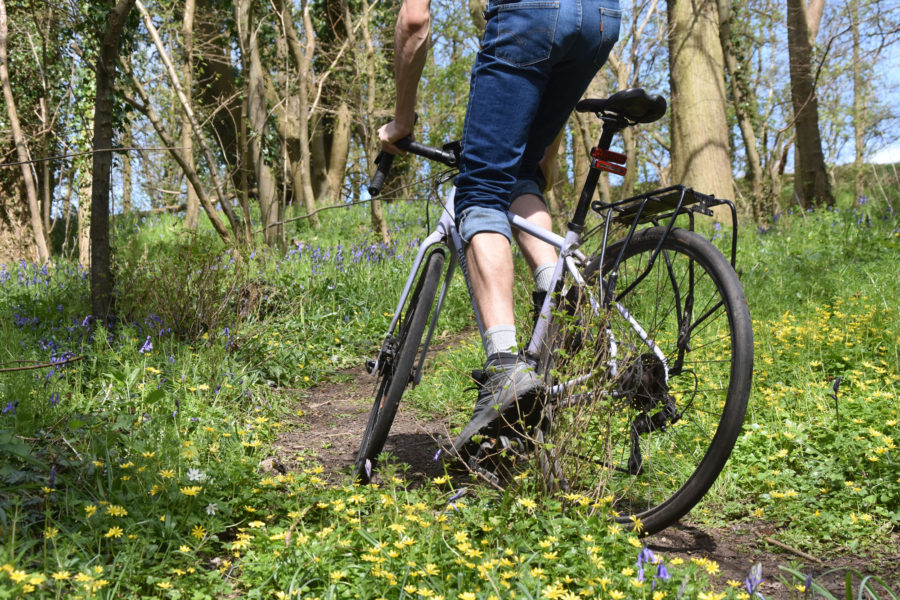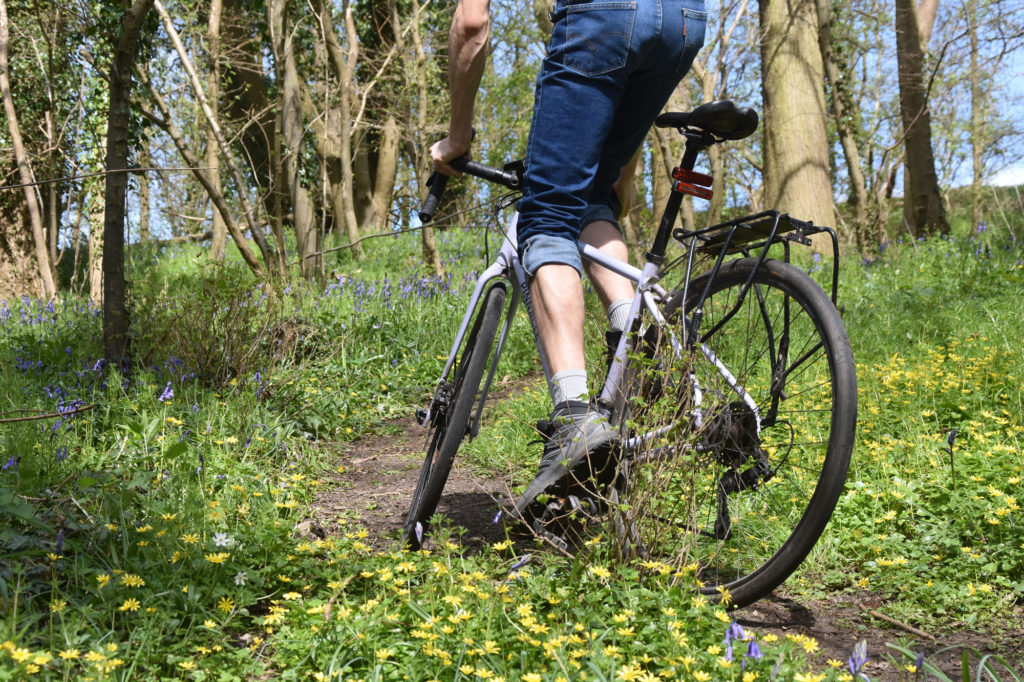One unexpected outcome of this corona virus pandemic is the world wide boom in cycling. Bike shops around the globe have been inundated with people buying bikes, with models flying so fast off the shelves that bike manufacturers can’t make them fast enough, and backlogs are going to take literal years to fulfill.
At the same time, COVID19 is wrecking havoc with production of components and frames, causing widespread delay in production and trading.
This has meant a global shortage in new bikes, and because of this many people are turning to second hand bikes instead. But how do you know what’s a good bike? And what should you look for when buying online? Well, I’m here to run this through with you step by step.
Where to find a Second Hand Bike
There are lots of places to look for second hands bikes. These are my first recommendations:
Firstly Demo bikes. Lots of the larger bike chains, touring companies, MTB hire companies and leisure parks will always, after a season, have some used bikes they are selling off cheaply. These won’t be brand new; they might have been tested, or ridden by others for a year, so there might be dents and knocks in the paintwork. However, they will always be in workable condition, as they’ll have been maintained for the public by a mechanic. They are often hugely discounted from their normal price. I’ve gotten my fantastic mountain bike for a 8th of the price after it had completed three seasons in the bike park. Sure, technology is last year and the frame was a bit beat, but it climbs hills and take on single track like a champ anyway. Check out bike parks like Bike Park Wales, PedalBikeAway, Glencoe bike park, and leisure centres like CentreParks.
Next, Clearance bikes. Similar to above: larger bike chains often have bikes on clearance sale. These bikes are usually there after being used as a demo bike in a shop, having been bashed during travel, or returned by a customer. They are, in general, basically a new bike and the price ranges often match this, but keep your eyes out for some insane bargains too. Clearance pages on the bike websites will be the best place to find these.
Police bike sales. Occasionally the police will run a sale on abandoned bikes, or stolen and recovered bikes. They go cheaply, and you’d be surprised what nice stuff you can find in there. Have a look at your local police website to find out details.
Your Local Bike Shop Lots of bike shops will have a section of second hand bikes. These will in general will be in good condition, have had a mechanic fix any problems, and will be there to help you get fitted to the bike, as well as offer any extras you might want like panniers or mudguards. It’s not as cheap as you might want, but it’s definitely reliable.
Online Market Places This is the best way to get a bargin, but also the most easy to get conned. I’ll talk more about this later. Firstly, where you might look: I recommend Facebook marketplace, and any Facebook special interest groups, Gumtree, Ebay or Freecycle. It’s also useful looking at forums like BikeRadar’s Buy-and-Sell, Pink Bikes “for sale” forum or SingleTrack’s Classified ads.
Buying Online: How to Know if it’s Stolen
When thinking about buying a bike, I recommend to always check the serial number on the bike. It’s usually under the downtube of the frame.
Once you’ve found it, pop the number into Bike Index, or Bike Register, and check to see if anyone has registered it as stolen. If it turns out it is a stolen bike, then there is a sad ex-owner somewhere. If they trace you down, you’ll be made to return the bike to the original owner, with no compensation.
You can ask to see a receipt of purchase if you can’t find the number also. If the seller doesn’t have one, be wary.
Online Ads- what to look for
When looking for a bike online, there are number of steps I go through before considering visiting it or buying it. Some of these will seem pretty simple, but I find it useful to do anyway.
Firstly, google the brand and name of the bike. Check when the bike was new, and if possible, what it cost as new. This will help you make a decision as to whether it’s worth as much as it’s being sold for. An example- a friend of mine was thinking about buying a bike that, from our research, hadn’t been sold for 6 years, and at the time cost £750, it was being sold for £675 second hand. It’s wasn’t worth that. We bargained it down to a more appropriate price.
Next, ask for photos, or check the photos provided carefully. You’re looking for lots of things- check the frame looks un-rusty, and has no dents or cracks that you can see. Have a look at the state the gears, chain and cassette are in; is there rust? Do they look well used? What brand are they? Look over the rest of the parts- are they rusty, dirty or broken? Does anything look like it’ll need to be replaced? It’s important to evaluate how much you’re going to need to update when you get the bike; if it’s going to be a fortune, you might get a better deal elsewhere. Or you could haggle the price down.
Now, talk to the owner. See what they say about how much use it’s had, what updates or changes they’ve made to the bike, and how recently. If they have a lot to say, they’re probably good bike owners who maintain their bikes, and the bike is more likely to be in good working order. Ask why they’re selling the bike too- always a good question.
Keep in mind some other things: weight, whether it has accessories like racks or mudguards (if you want them), does it have enough gears for you, and of course, is it the right size, the right style, and a cool colour.
Visiting the bike: what to look for
Finally you’re off to see the bike!
Make sure to go and see it in a public place, or bring a friend along too to be sure of safety. If you need help with mechanics, bring someone who knows bikes who can let you know it’s in working order. Don’t be afraid to say no if it’s not what you expected.
When you see the bike, firstly give it a once over. As in the last section, have a good, close look at the condition of the frame, gears, tyres, bottom bracket, wheel hubs and rims. Check for signs of damage or rust. To be honest, if there is any visible damage to the frame, I would say no immediately- it’s going to be hard to fix. Everything else can be changed, but really access if it’s worth it for the money you are paying. For instance- if there are cracks in the tyres, or if they’re really threadbare, they’ll need to be changed. That’s somewhere in the region of £40-£80. If the bike you’re buying is £200, that’s already a quarter increase on the price. A new chain and cassette is more likely £200. It depends on who are you are and what you can be bothered to spend, but it’s always worth factoring in these changes and the cost they’ll amount to.
Next, sit on the bike. Raise the seat up so it’s at the level of your hips and sit on it; see how comfortable it is, and whether it fits you. Obviously, if it’s too big or small, don’t buy it.
Have a ride on it next. Access how it feels to ride, whether there is any creaking or squeaking. Methodically change up and down through the gears, checking how they shift and whether you can reach each gear. Brakes sharply a few times to check the brakes. Give a go stopping, getting off and getting back on- really just test everything out on the bike to see the parts are in working order, it’s comfortable to ride and it’s what you expected.
If all this goes well- then buy the damn bike! And get out riding.
Buying a second hand bike is a great way to get out on two wheels, and its often easy to find a good bargain, an interesting vintage steed or an excellent, well loved bike. Just make sure to take your time, do your research and invest in something you’re going to love.
Happy Hunting!

